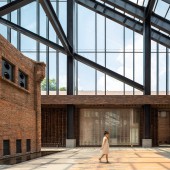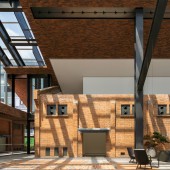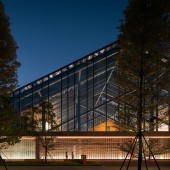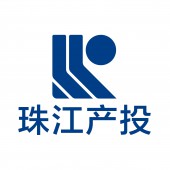Guangzhou Julong Bay Exhibition Center by Ann Yu |
Home > Winners > #148116 |
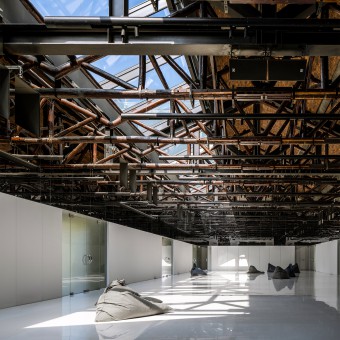 |
|
||||
| DESIGN DETAILS | |||||
| DESIGN NAME: Guangzhou Julong Bay PRIMARY FUNCTION: Exhibition Center INSPIRATION: The Chongkou warehouse is a group of old warehouses on the river bank, which retains its identity as an old building and avoids being classified as a historical and cultural preservation building and thus has a new fate. It is also possible to completely avoid the "something if nothing, a reality if nothing, great wisdom if foolishness". This is indeed the luck of its destiny. And it is even more fortunate that we, as designers, have been given this honored opportunity to renovate this group of nearly century-old buildings and bestow them a contemporary significance. UNIQUE PROPERTIES / PROJECT DESCRIPTION: Located on the west bank of the Pearl River, the original site with four separated brick warehouses built in the 1950s was a significant granary of Guangzhou. As the first stage of the city government’s renewal master plan in the area, the key objectives of the adaptive reuse project were to remain its industrial past as a reminder of history, while building a city-planning exhibition hall and civic center that act as a beacon to investors, developers, and citizens, to encourage massive participation in the rebirth of the old district. The core design idea was to ensure its new functional usability while presenting the old site in an attractive way to the young generation. The project has been rated a high score in the SITES Sustainable System, as the first to achieve that in China. OPERATION / FLOW / INTERACTION: The old warehouses were built for plain purpose with a simple brick structure. The original structure and materials of the warehouses were reserved as far as possible, while customized imitated clay bricks are adopted in the new-built part. In order to create a connected inner space for a new massive building, a canopy of glass and steel structure was designed to build on the parallel barns, which enabled the interior to be rearranged flexibly usage. Its triangle appearance inherits the inclined angle of the sloping ceilings of the old warehouses, and at the same time gives a steady yet energetic characteristic. Modern steel structure and glass, together with traditional bricks, worked harmoniously. The steel structure of the canopy extended on both sides to the ground, which formed a corridor that brought in the riverside landscape, and a coexistence with the original plants on the site. It also created an interaction between the building and the natural environment, which helped to build a friendly and cozy ambiance for the interior. PROJECT DURATION AND LOCATION: The project started in February 2021 in Guangzhou China and finished in February 2022 ,and exhibited in Guangzhou China in May 2022. FITS BEST INTO CATEGORY: Interior Space and Exhibition Design |
PRODUCTION / REALIZATION TECHNOLOGY: large-span steel frame and full-slope glass curtain wall system; handmade bricks SPECIFICATIONS / TECHNICAL PROPERTIES: Area:5000 meter square TAGS: Oldbuildings, conservation, revitalisation, reuse, Revitalization of old buildings, Reborn, Exhibition Center, Handmade Bricks RESEARCH ABSTRACT: The original site of this project is four separated brick granaries that were built in the 1950s. As the first stage of the renewal plan in the area, the key objectives of the adaptive reuse project were to remain its industrial past as a reminder of its history, while building a city-planning exhibition hall and civic center. To encourage massive participation in the rebirth of the old district, the original structure and materials of the warehouses were reserved as far as possible, while customized imitated clay bricks are adopted in the new-built part. The core design idea was to ensure its new functional usability while presenting the old site in an attractive way to the young generation. CHALLENGE: For practicing designers, there is not much room for practice due to the overwhelming historical meaning of the architectural conservation field, which is too complicated to regulate. Instead, there are a lot of possibilities in the field of conservation revitalization of old buildings on how to renovate. The numerous protective revitalization approach is either an allusion to or an extension of the different repair theories in the right proportion. Take the example of Chong Kou Warehouse. Transformed from a 19th-century grain warehouse into a commercial urban exhibition center, the original building group has a very simple layout. Three groups of 13m x 45m square pods of uniform length and width in proportion to their structure are lined up along the short side at 10m intervals. The physical spaces of the building have a good and balanced ratio of area to open void spaces. The warehouse, on the other hand, has an interior usable area of 1,755 square meters, which in fact cannot take on the full function of an urban exhibition center. Therefore expansion became necessary. On the basis of the structural characteristics of the original building, a vertical extension would be extremely costly and irreversibly damage the sloping roof of the original building. Thus flat expansion became the first choice. The open void space of the original site is incorporated into the new space and organized into a non-thematic visiting/reception/r ADDED DATE: 2023-02-08 07:59:13 TEAM MEMBERS (1) : IMAGE CREDITS: Ann Yu, 2022. |
||||
| Visit the following page to learn more: http://www.hkdomani.com/ | |||||
| AWARD DETAILS | |
 |
Guangzhou Julong Bay Exhibition Center by Ann Yu is Winner in Interior Space and Exhibition Design Category, 2022 - 2023.· Read the interview with designer Ann Yu for design Guangzhou Julong Bay here.· Press Members: Login or Register to request an exclusive interview with Ann Yu. · Click here to register inorder to view the profile and other works by Ann Yu. |
| SOCIAL |
| + Add to Likes / Favorites | Send to My Email | Comment | Testimonials | View Press-Release | Press Kit |
Did you like Ann Yu's Interior Design?
You will most likely enjoy other award winning interior design as well.
Click here to view more Award Winning Interior Design.



